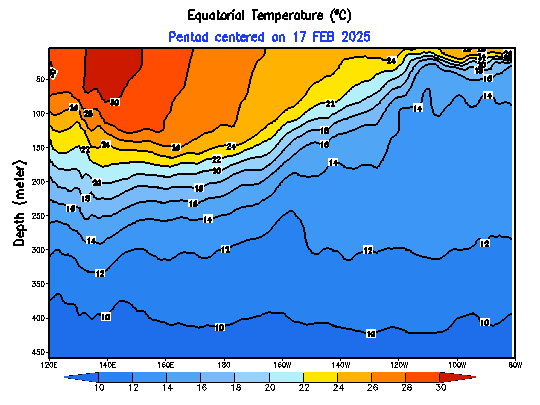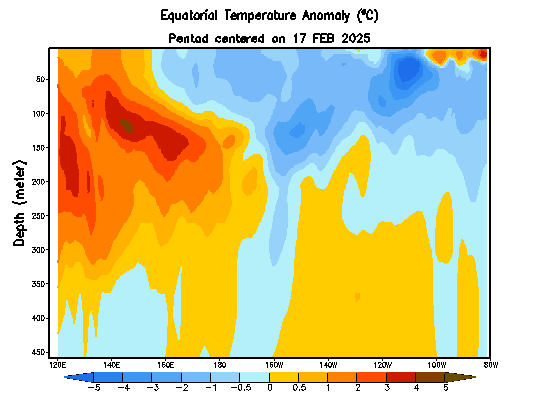This is an interesting paper on capturing the volumetric effects of sloshing:

linked from NOAA here

Absolute temperature, from which the anomaly is based

Anomaly of temperature. The emerging hotspots are what lead to El Nino conditions.
This is an interesting paper on capturing the volumetric effects of sloshing:

linked from NOAA here

Absolute temperature, from which the anomaly is based

Anomaly of temperature. The emerging hotspots are what lead to El Nino conditions.
The challenge of explaining climate phenomenon such as ENSO leads to an interesting conundrum. Do we want to understand the physics behind the phenomenon, or do we want to optimize our ability to forecast?
Take an example of the output of a crude power supply. Consider that all one has is one cycle of output.
Why is the problem solver in better shape?

In this case, the problem solver is right because the power supply happens to be a full-wave rectifier needed to create a DC supply voltage. The forecaster happened to make a guess that would have been correct only if it was an AC power supply.
Lose your generality and that is what can happen. As Dara says, the key is to look for structures or patterns in the data — while reducing the noise — and if that means to use as much of the data as possible, so be it.